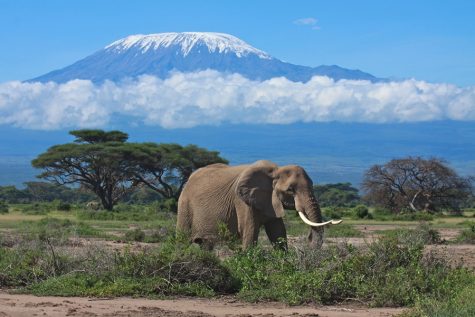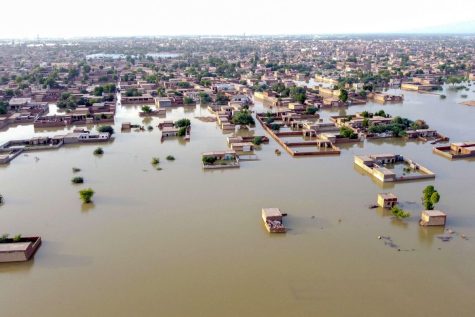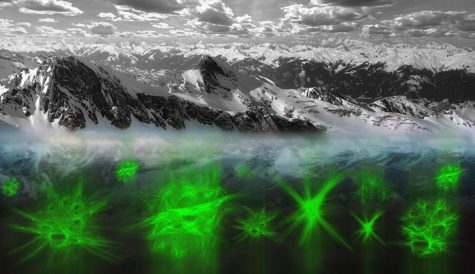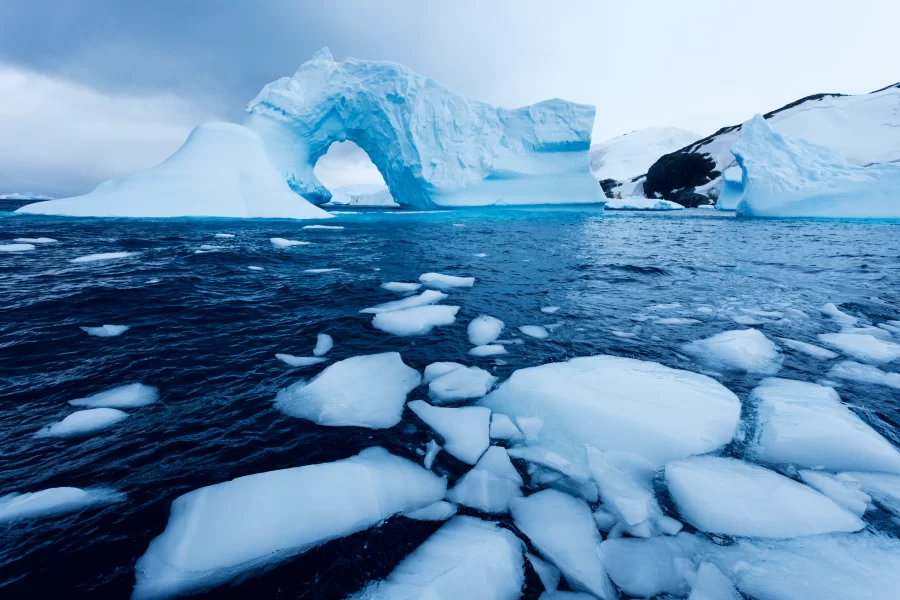New Bacteria, Viruses Could Be Introduced To Ecosystems Due To The Melting Glaciers
Global warming has had its effects on climate change and has contributed to the melting of glaciers, causing mass flooding and the release of ancient bacteria and viruses.
Credit: Henryk Sadura Getty Images
Melting Ice Caps
The awakening of unknown bacteria and viruses is something that still needs more tests done, as its potential effects on the ecosystem are mostly unknown. While this could be an issue that could pose a problem for humans way down the line in the distant future, there are other matters to deal with that demand immediate attention in comparison that is also caused by global warmings, like the rise in sea levels due to mass flooding and climate change affecting ecosystems negatively. This temperature rise could be bad for the migration patterns of certain species and the local organisms that are sensitive to warmer climates that normally prefer colder temperatures.
According to research done by UNESCO, many iconic glaciers are set to vanish within the next 30 years at this pace, as the global melting of these notable glaciers contributes to around 20 percent of the rapid sea level rise of the past few decades since it was recorded in 2000. UNESCO is the United Nations Educational, Scientific and Cultural Organization. On the UN website, they state their mission is “to contribute to the building of a culture of peace, the eradication of poverty, sustainable development, and intercultural dialogue through education, the sciences, culture, communication, and information.”

Glaciers are a major player as a key source of freshwater, but melting more doesn’t exactly add to more potential drinking water, as meltwater caps at a certain point. After a glacier’s peak water is met and contributes to the environment, the annual runoff lessens till the glacier is not big enough to produce any more as a global water supply. Glaciers at World Heritage sites, like Mount Kilimanjaro and others like it all around the world, shed around 58 billion tons of ice each year, UNESCO reports.
According to a climate change study done by Rebecca Lindsey and LuAnn Dahlman of Climate.gov, the global average temperature has already risen around 34.16 degrees Fahrenheit since the industrial revolution (which ended around the 1840s) and has continued to climb.
The recession of the glaciers hits the hardest with massive floods to communities, as Pakistan is a recent example, and suffered a deadly flood that left a third of its country under water. Authorities in Pakistan say they are “not out of the woods yet” and are still in danger for up to six months since the flood waters hit in September of this year. The floods have yet to completely subside in the hardest-hit areas, while the risk of rising water is still a problem from large rivers. The glaciers melting form glacial lakes and the accumulation of water bursts. Destructive floods like these have also contributed to record-breaking monsoon rains and brought in waterborne diseases (cholera, dengue, etc.) that have claimed thousands of lives already, as well as an estimated total of $30 billion in overall damages, according to UNICEF.

There are still many more affected countries by climate change like Pakistan, as even if global warming is slowed, about a third of the world’s most iconic glaciers are set to disappear by 2050, according to a study done by UNESCO. However, only by regulating global warming to 34.7 degrees Fahrenheit above preindustrial levels can we save glaciers at the other two-thirds of these parks, UN scientists report. But the problem doesn’t end with the glaciers at the parks, the melting of Artic ice sheets and ice caps is also another main cause of soaring sea levels and is a problem in releasing trapped greenhouse gases like methane, further adding to the climate change crisis. And that could start the spread of ancient bacteria and viruses that live in these glaciers and permafrost, as some were found to adapt to warmer climates and are potentially harmful pathogens with not many known weaknesses.
However, when talking with Prof. Mark Sawyck, senior Biology instructor at Mercy College, he was not as worried about bacteria.
“In terms of the types of bacteria there could be in a glacier, there are two main types. The first type would be bacteria that like the ice-cold environment and are alive (and multiplying). The second type would be bacteria that don’t like the ice-cold environment but have defensive mechanisms to stay dormant and hibernate, as they become endospores of those bacteria.”
Endospores are dormant versions of bacteria and are not living (in hibernation). Melting glaciers can release new bacteria and can wake up, and stop becoming endospores. This could ruin the ecosystem and cause potential diseases for living organisms.
According to Sawyck, it has happened in the past but it hasn’t affected humans noticeably enough to be a cause for concern. He also said “Most bacteria aren’t pathogenic or not causing disease. Usually, most bacteria are beneficial, as they normally break down dead organisms usually and benefit the ecosystem.”
At the Mercy School of Health and Natural Sciences, Sawyck specializes in healthcare fields like microbiology, as well as anatomy and physiology (A&P).

Many bacteria are not invasive and even though unknown bacteria could be introduced due to melting glaciers, there are usually more positives than negatives. It could just affect the ecosystem or just animals and plants if something were to happen.
The bacteria that can form endospores are potentially more dangerous, as the bacteria that live in only cold temperatures could be at the rate of extinction due to loss of habitat, like psychrophiles. Ice-loving bacteria like psychrophiles can’t stand anything other than the deep sea or glaciers.
However, a bacteria like the Trichococcus patagoniensis can develop “an endospore and can withstand cooking temperatures, as it may not like it but it can survive and once the temperature drops back down, it breaks down its endospore and continues living,” according to Sawyck.
Bacteria that could survive in a wide range of temperatures, with the endospores, would make it very tough if certain ones do cause problems for ecosystems shortly. This would be even worse if an unknown bacteria like that could be harmful to humans, but at this point, it is mostly unknown and is not a foreseeable problem shortly. Viruses could be a whole different story, however, but the same can be said with new or ancient bacteria being discovered, as there is still way more testing to be done to determine if it is a threat to ecosystems, let alone humans, in terms of potential diseases.

Andrew Kim is a senior majoring in Journalism. Transferring and switching majors a few years ago was a big risk but it has been well worth it so far. Andrew...








